Smith & Wesson Model 586 Review
Delve into the classic Smith & Wesson Model 586, a .357 Mag/.38 Spl revolver with the robust L-frame in carbon steel. Available in 4″ and 6″ barrels, this DA/SA firearm has a 6-round capacity, features adjustable rear and fixed front sights, ergonomic grips, a transfer bar safety, and weighs approximately 2.5 lbs. Introduced in 1980, this revolver was designed to offer law enforcement officers, competitive shooters, and gun enthusiasts a high-quality, versatile firearm capable of handling the powerful .357 Magnum cartridge.
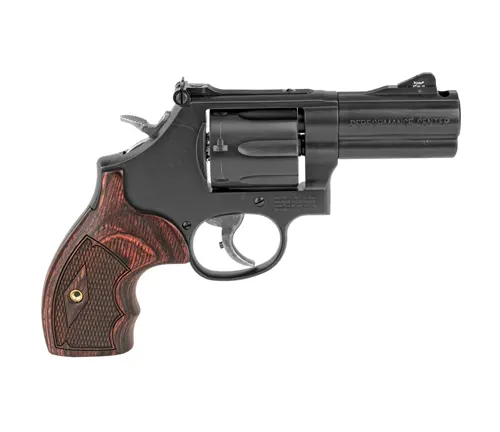
S&W Model 586 Specifications
- Brand: Smith & Wesson
- Caliber: .357 Mag/.38 Spl
- Frame: L-frame, Carbon Steel
- Barrel Lengths: 4″ and 6″
- Action: DA/SA
- Capacity: 6 rounds
- Sights: Adjustable rear, fixed front
- Grip: Ergonomic
- Safety: Transfer bar
- Weight: ~2.5 lbs
Design and Features
The Model 586 is built on Smith & Wesson’s L-frame, which was specifically developed to withstand the pressures of the .357 Magnum round. The L-frame bridges the gap between the smaller K-frame, favored for its manageability and the larger N-frame, known for its durability under heavy use. This intermediate size makes the Model 586 a balanced choice for both carrying and shooting, offering a good compromise between handling and firepower.
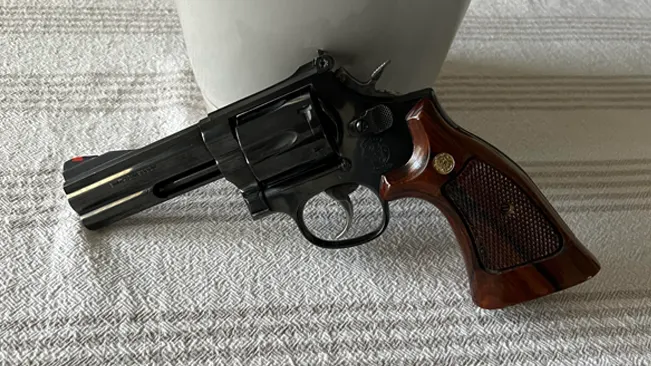
The revolver features a carbon steel frame, cylinder, and barrel, contributing to its notable heft and stability when firing. It is available in various barrel lengths, including 4-inch and 6-inch options, allowing users to choose the balance and sight radius that best suits their needs. The full underlug barrel not only adds weight to reduce recoil but also gives the Model 586 its distinctive, aggressive appearance.
Barrel Lengths
Offering options like the 4-inch and 6-inch barrels allows users to select a Model 586 that best fits their needs. Shorter barrels are favored for concealed carry and close-quarters use, while longer barrels provide better accuracy and velocity for rounds, making them ideal for target shooting or hunting.
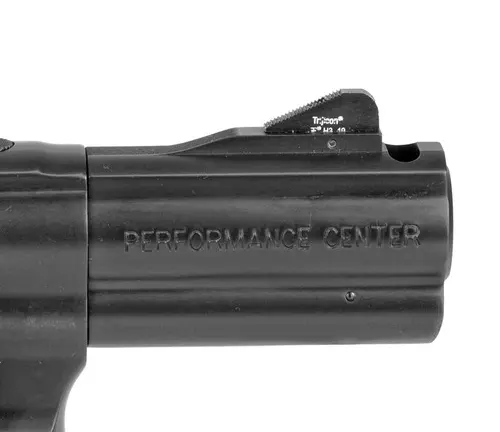
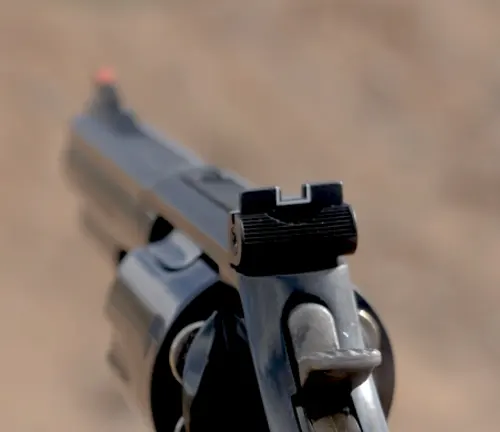
Sights
The adjustable rear sight and fixed or red ramp front sight combination facilitate precise shot placement. The adjustability of the rear sight for both windage and elevation enables shooters to fine-tune their sights for various shooting conditions and distances, enhancing the revolver’s versatility across different shooting disciplines.
Action
The double-action trigger allows the shooter to fire quickly without cocking the hammer manually, crucial in self-defense situations. The single-action option, where the hammer is manually cocked for each shot, offers a lighter trigger pull and greater accuracy, suitable for target shooting and hunting.
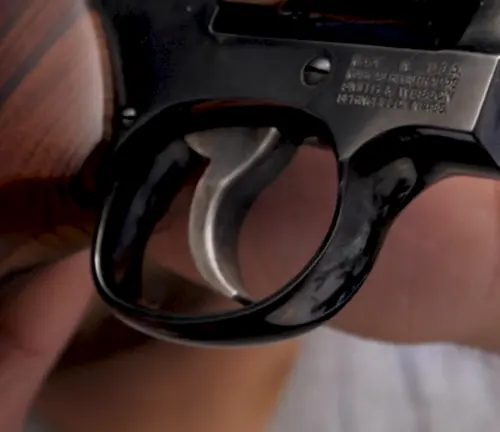
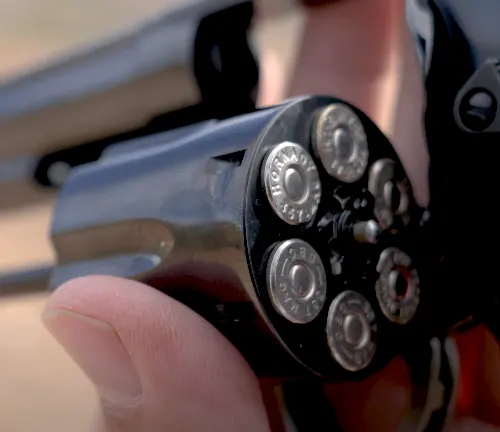
Cylinder Capacity
The six-round capacity strikes a balance between firepower and design efficiency, ensuring the revolver remains compact and manageable without sacrificing too much on the ammunition capacity front, a critical aspect for both self-defense and competitive shooting.
Grip
Ergonomically designed grips enhance shooting comfort and control, minimizing recoil impact on the shooter’s hand and improving accuracy. The grips can be made from various materials, including wood, rubber, or synthetic composites, and can be easily customized to fit the shooter’s preference, providing a personalized shooting experience.
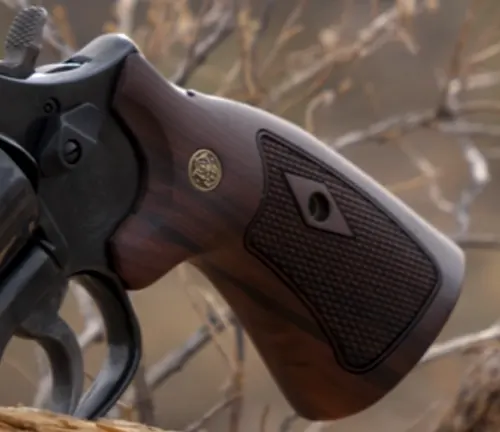
Pros and Cons
Pros
- Can fire both .357 Magnum and .38 Special rounds, offering a balance between power and recoil.
- Made with carbon steel for longevity and resistance to wear.
- Features like the adjustable sights and ergonomic grips enhance accuracy and shooting comfort.
- The L-frame provides a good balance between handling and the ability to withstand repeated magnum use.
- Includes a transfer bar safety mechanism to prevent accidental discharge.
Cons
- Its robust construction makes it heavier than some other models, potentially affecting carry comfort.
- While the full underlug helps manage it, the powerful .357 Magnum rounds still produce significant recoil.
- High-quality materials and construction mean it may be more expensive than some alternatives.
- Despite being a balanced size, it may still be too large for concealed carry for some individuals.
Performance and Use
One of the Model 586’s hallmarks is its accuracy. The revolver’s precision is enhanced by its adjustable rear sight and fixed or red ramp front sight, facilitating accurate shot placement even at longer distances. The double-action trigger mechanism allows for rapid firing without sacrificing accuracy, a critical feature in law enforcement and self-defense situations.
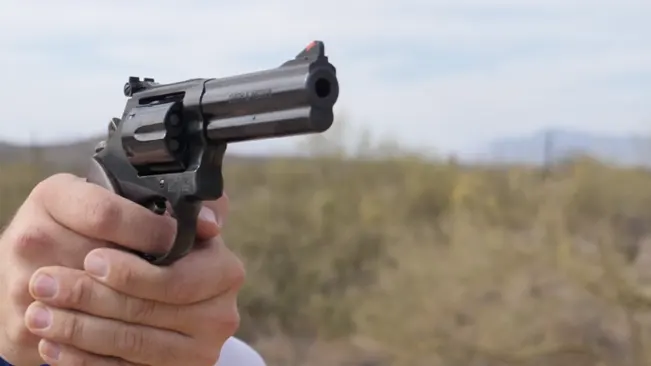
The versatility of the Model 586 also lies in its ability to fire both .357 Magnum and .38 Special ammunition. This dual compatibility provides users with a range of power options, from the more potent .357 Magnum for self-defense and hunting to the less recoiling .38 Special for target practice and competition shooting.
My Personal Maintenance Routine Smith & Wesson Model 586
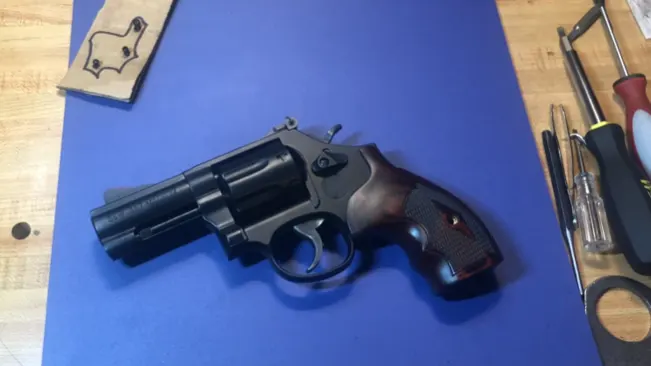
- Safety First Always start by ensuring the revolver is unloaded. I visually and physically check the cylinder to confirm it’s empty. This step is non-negotiable for me, every single time.
- Disassemble with Care I carefully open the cylinder and remove it from the frame, if possible, depending on the level of cleaning needed. For a basic routine, opening the cylinder is usually sufficient.
- Barrel Cleaning: Using a bore brush dipped in solvent, I gently scrub the inside of the barrel. I follow this with a few passes of a cleaning patch until it comes out clean. It’s satisfying to see the grime come off, knowing each pass preserves the barrel’s integrity.
- Cylinder Care I clean each chamber of the cylinder in the same way as the barrel, ensuring not to miss any residue. It’s a meticulous process, but crucial for maintaining smooth action and reliability.
- Frame and Action Cleaning With a soft-bristled brush and solvent, I carefully clean around the frame, paying special attention to the firing pin and the area around the trigger. These parts can get surprisingly dirty, and keeping them clean ensures smooth operation.
- Lubrication After everything is clean and dry, I apply a small amount of gun oil to moving parts. I’m careful not to over-lubricate, as too much oil can attract dirt and debris, potentially gumming up the action.
- Wipe Down Using a soft, dry cloth, I give the entire gun a final wipe-down to remove any leftover residue and to spread the oil evenly. This also gives me a chance to inspect the gun for any wear or damage.
- Grip Care If my grips are made of wood, I’ll occasionally treat them with a suitable wood polish to keep them looking sharp. For synthetic grips just get a clean, damp cloth wipe.
- Reassembly and Function Check After everything is clean and lubricated, I reassemble the revolver and perform a function check. I open and close the cylinder, dry fire (in a safe direction with a snap cap), and ensure everything feels as it should.
- Storage Once I’m satisfied that my Model 586 is in top shape, I store it in a cool, dry place. I use a silicone gun cloth for one last wipe down before putting it away, to add a protective layer against moisture and fingerprints.
Safety Tips

- Always assume a gun is loaded, even if you believe it’s not. This mindset encourages cautious handling and prevents accidental discharges.
- The safest direction is often down towards the ground or towards a direction that would minimize harm in the event of an accidental discharge. Never point a firearm at anything you do not intend to shoot.
- Your finger should rest along the side of the gun’s frame and only move to the trigger when you’re aimed and ready to fire. This helps prevent unintentional shots.
- Always know what you’re shooting at and what lies beyond and around your target. Bullets can penetrate and travel beyond your intended target, so awareness of the surroundings is crucial for safety.
- Shooting can be loud and can produce debris, so protecting your hearing and eyesight is essential. Always wear appropriate safety gear when firing your revolver.
Smith & Wesson Model 586: My Expert Ratings and Insights
| Aspect | Review Summary | Score |
|---|---|---|
| Cleaning Frequency | Regular cleaning after use is crucial for maintaining performance. I advocate for a strict regimen. | 8/10 |
| Lubrication | Proper lubrication is key for smooth operation and to minimize wear. I recommend consistent application. | 7/10 |
| Inspection | A thorough inspection for wear, damage, or mechanical issues after each use is essential for safety and reliability. | 8/10 |
| Storage Conditions | The revolver should be stored in a dry, temperature-controlled environment to prevent rust and damage. | 8/10 |
| Ammunition Check | Regularly check and rotate ammunition to ensure it remains reliable and safe to use. | 8/10 |
| Parts Replacement | Proactively replace parts that show signs of wear to keep the firearm in top condition. | 8/10 |
| Professional Servicing | An annual inspection by a firearms professional can catch issues you might miss and ensure deep maintenance. | 7/10 |
| Accessory Care | Maintaining and checking accessories like holsters and sights ensures they function correctly and safely. | 7/10 |
| Training Regularity | Regular training sessions not only improve proficiency but also help in spotting operational issues. | 8/10 |
| Safety Gear Maintenance | Ensuring safety gear like gloves and glasses are in good condition is crucial for protection during shooting. | 8/10 |
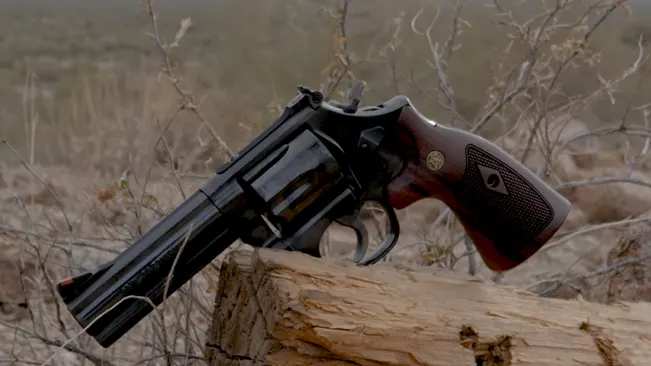
Conclusion
The Smith & Wesson Model 586 Distinguished Combat Magnum stands as a testament to the craftsmanship and innovation of one of America’s oldest firearms manufacturers. Its enduring popularity over the decades reflects its quality and versatility, offering something for nearly every revolver shooter, whether they are seeking a weapon for defense, duty, or sport. The Model 586 remains a symbol of the enduring appeal of the revolver in an age dominated by semi-automatic pistols, embodying the timeless values of precision, power, and reliability.
FAQs
- What calibers can the Smith & Wesson Model 586 fire?
It can fire both .357 Magnum and .38 Special rounds. - What is the frame size of the Model 586?
The Model 586 is built on Smith & Wesson’s medium-sized L-frame. - What materials are used in the construction of the Model 586?
It features a carbon steel frame, cylinder, and barrel. - What barrel lengths are available for the Model 586?
The revolver is offered with either 4-inch or 6-inch barrel lengths. - Does the Model 586 have a single-action or double-action mechanism?
It features a double-action/single-action (DA/SA) mechanism. - How many rounds can the Model 586 cylinder hold?
It has a 6-round capacity. - What type of sights does the Model 586 use?
It is equipped with an adjustable rear sight and a fixed or red ramp front sight. - What type of grip does the Model 586 have?
The revolver comes with an ergonomic grip, the material and design of which may vary. - What safety features does the Model 586 include?
It incorporates a transfer bar safety mechanism. - How much does the Model 586 weigh?
The weight varies by model, with the 4-inch version approximately weighing around 2.5 lbs.
We’re eager to hear from you! If you’ve had the opportunity to experience the Smith & Wesson Model 586 firsthand, we invite you to share your stories and opinions in the comments section below. Whether it’s about your time at the range, your maintenance routine, or how it feels to hold such a distinguished revolver, your insights are invaluable. Your experiences could provide crucial guidance for fellow enthusiasts and those considering adding a Model 586 to their collection. Dive in and let’s create a rich, informative conversation together!
Latest Post
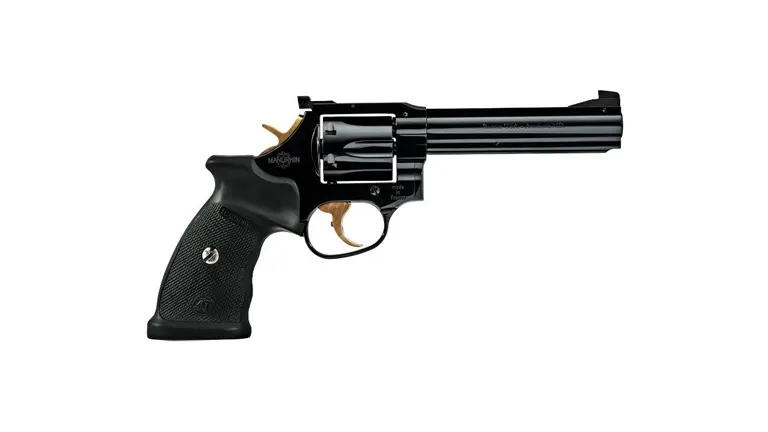
Manurhin MR73 Review
Experience the precision of the Manurhin MR73, a revolver chambered in .357 Magnum and .38...March 8, 2024
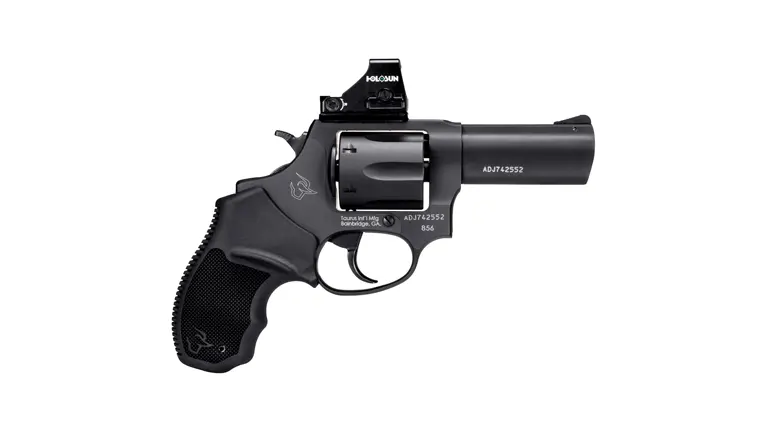
Taurus 856 TORO Review
Discover the Taurus 856 TORO, a compact .38 Special revolver with a 6-round capacity. Featuring...March 8, 2024
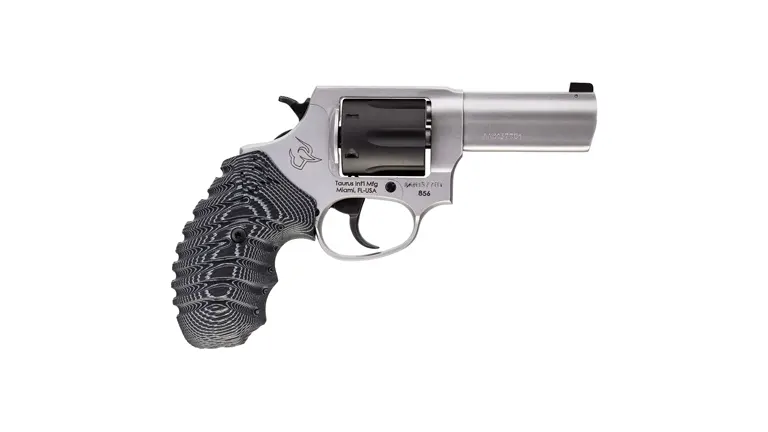
Taurus Defender 856 Review
Explore the Taurus Defender 856, a .38 Special (+P) revolver with a 6-round capacity and...March 8, 2024
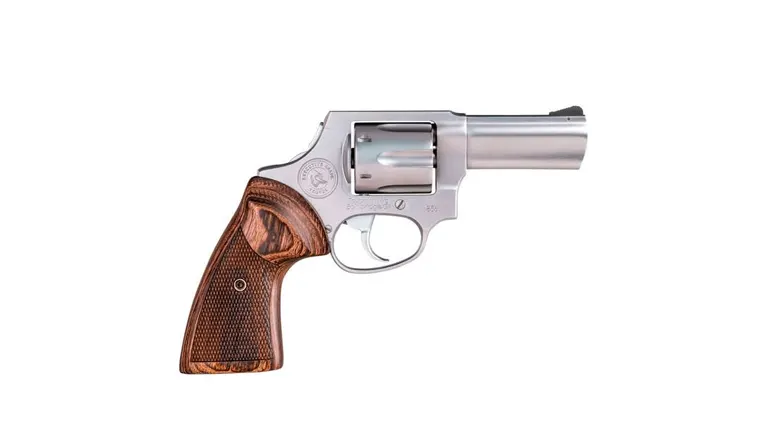
Taurus 856 Executive Grade Review
Introducing the Taurus 856 Executive Grade in .38 Special +P, featuring a 6-round capacity and...March 8, 2024
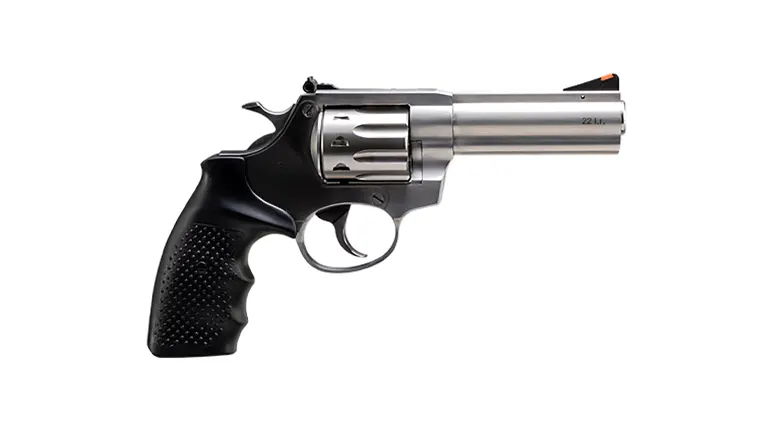
Rock Island Armory AL22M Review
Discover the Rock Island Armory AL22M, a .22 Magnum revolver with an 8-round capacity. Features...March 8, 2024
Weekly Newsletter
Do you want to get notified when a new article is added to Guncritic? Sign up for our newsletter and you'll be among the first to find out about new articles and reviews.
Comment